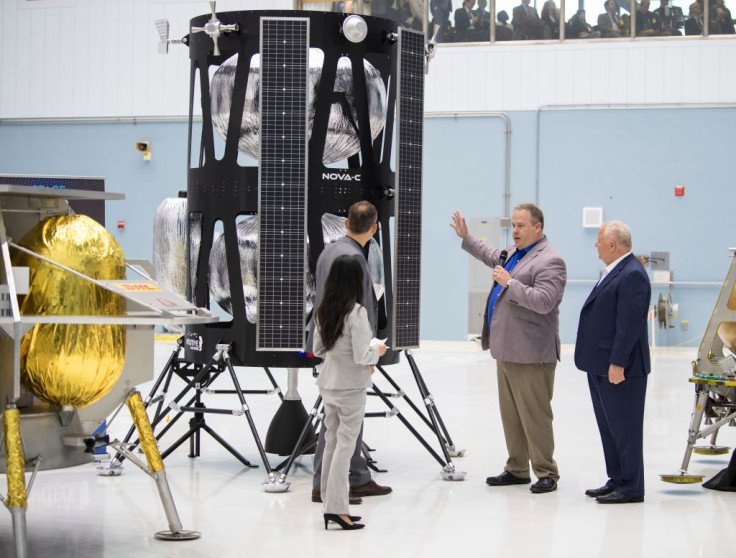SpaceX Falcon 9 To Launch Several Private Moon Landers As Early As 2020

NASA has selected three American firms to lead the United States’ return to the lunar surface starting 2020.
The three U.S. firms -- Astrobotic Technology, OrbitBeyond, Inc. and Intuitive Machines LLC -- have been awarded over $253 million by NASA to develop lunar landers that will touch down on the moon’s regolith in 2020 and in 2021. The three are among a multinational group of seven firms that are part of the Artemis Program whose ultimate goal will be to land humans anew on the Moon by 2024.
At present, SpaceX is scheduled to fly two landers (from OrbitBeyond and Intuitive Machines) to the moon as the payload aboard its Falcon 9 launch vehicles. The lone holdout, Astrobotic, will also likely choose SpaceX and the Falcon 9 but is still talking to other launch service providers.
The other four firms are still in the process of booking their flights to the moon. They are iSpace, SpaceIL/IAI, PTScientists and Moon Express. iSpace is Japanese, SpaceIL/IAI is Israeli, PTScientists is German while Moon Express is American.
These seven firms are part of NASA’s Commercial Lunar Payload Services (CLPS) initiative. CLPS is the first phase of Artemis, which will also send the first woman and the next man to the moon.
CLPS, however, focuses more on building robotic vehicles rather than manned moon landings. NASA said the goal of CLPS is to deploy instruments and science experiments to the surface of the moon using commercial landers developed and operated by these seven private firms.
OrbitBeyond CEO Siba Padhi said the company's lander will touch down on the moon on Sept. 27, 2020. It plans to fly up to four payloads to Mare Imbrium, a lava plain in one of the moon's craters.
Astrobotic intends to deploy up to 14 payloads to Lacus Mortis, a large crater on the near side of the moon, in July 2021. Intuitive Machines plans up to five missions to Oceanus Procellarum, which NASA calls a "scientifically intriguing dark spot,” also by July 2021.
“These companies are prime examples of American ingenuity, vision, and know-how,” said NASA administrator Jim Bridenstine. “Because of these landers and the instruments they deliver, the science technology and research that will be done in the immediate future will prepare the way for humanity’s return to the Moon by 2024.”
NASA said the CLPS spacecraft will aid the overall Artemis program by helping NASA learn a few more details about the lunar regolith before humans return after an absence of more than 50 years.
Scientists and engineers want to know just how much water ice is hidden on the moon’s surface. NASA spacecraft orbiting the moon have continuously detected water as water ice, but scientists still don’t know how much is there and what form most of it’s in.
A massive reservoir of water potentially means astronauts can use this water for drinking or irrigation in a lunar base. On the other hand, the ice can be broken apart into hydrogen and oxygen and converted into rocket fuel.
© Copyright IBTimes 2024. All rights reserved.





















